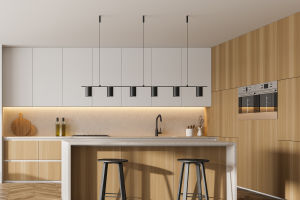Eating well isn't about trendy superfoods or skipping meals. It's about getting a mix of nutrients that actually support your energy, mood, and long-term health.
In this guide for Lykkers, you'll learn what balanced nutrition looks like in everyday life—and how to make it work for you without overthinking every bite.
We'll explore what your body needs (and why), how to build a meal that hits the mark, and easy ways to keep it all realistic and satisfying. Let's get into the tasty, colorful world of smart eating.
What Balanced Nutrition Actually Means
Eating should feel natural, not confusing. So let's start by breaking down the basics. When you understand the major building blocks of your meals, making healthy choices becomes second nature.
Meet the Macronutrients
Your body runs on two main energy sources: carbohydrates and protein. Each has a different job, and you need all of them.
Carbohydrates are your brain and muscles' favorite fuel. Whole grains, fruits, and vegetables not only give you energy but also offer fiber to support digestion and steady blood sugar.
Protein builds and repairs tissues, supports hormones, and helps keep you full. Think fish, eggs, legumes, tofu, or yogurt.
Healthy things(like those from avocado, nuts, seeds, and olive oil) help absorb certain vitamins and keep your cells functioning properly.
Registered dietitian Mary Ellen Phipps explains it this way: "Carbs give your body quick energy, protein keeps it going, makes the ride smoother."
The Power of Micronutrients
Beyond calories, your body craves vitamins and minerals to keep everything running. From calcium for your bones to iron for your blood, these nutrients are crucial—and the best way to get them is through a variety of colorful, whole foods.
Dr. Walter Willett from Harvard T.H. Chan School of Public Health says: "Diversity on your plate helps ensure you're getting what your body needs to thrive."
So when in doubt, think: more colors, more benefits.
How to Eat Balanced Every Day
Knowing what's good for you is just the start. The magic really happens when you bring it to your daily routine—meals that are simple, satisfying, and joyful.
Build Your Plate the Easy Way
One of the simplest ways to eat well is the "Healthy Plate" method. Harvard's School of Public Health recommends dividing your plate like this:
Half for vegetables and fruits
A quarter for protein
A quarter for whole grains
Add a glass of water or unsweetened drink, and maybe a small side of dairy or fortified plant-based option if you enjoy it.
This visual guide works wonders for balance—and it's flexible. Stir-fry, sandwiches, grain bowls, or even a breakfast spread can all follow the same ratio.
Make Smart Swaps You'll Actually Love
You don't need to change everything overnight. Just start with what you already eat and make a few thoughtful upgrades.
Instead of white rice, go for quinoa or brown rice. Trade in sugar-loaded snacks for a banana and a spoonful of nut butter. Swap soda for sparkling water with lemon.
Dr. Richa Mittal, an internal medicine specialist, notes: "Small changes in food choices—when made consistently—can lead to big improvements in health over time."
And don't forget: it's totally okay to enjoy your favorite treats now and then. What matters is what you eat most of the time, not every single meal.
Balanced nutrition isn't about being perfect—it's about being intentional. You're not chasing a number or cutting out entire food groups. You're giving your body the mix of nutrients it needs to feel good, every single day.
So next time you fix a meal or grab a snack, ask: Does this nourish me? Does it give me energy? Is it something I enjoy?
Eating well isn't a challenge—it's a celebration. Keep it colorful, flexible, and kind to your body. That's the Lykker way.


